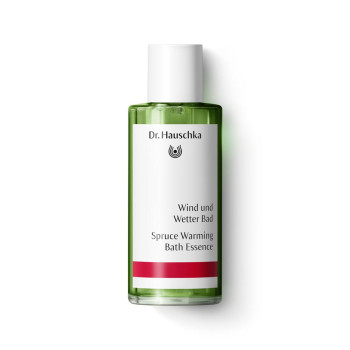
Norway Spruce
Synonyms: Spruce Fir
Scientific Name: Picea abies L.
Family: Conifers (Coniferae)
Habitat
In the extreme north and south of the globe, extensive belts of coniferous forest span large regions of the earth: the coniferous forests of Canada, Scandinavia, Russia, Siberia and Alaska, on the one hand, those of Chile, Tasmania and New Zealand on the
Constituents
The constituents that are relevant for medicinal purposes are the essential oils, the resins and vitamin C.
Description
The spruce we know today are monotonous, oppressive forests of closely packed poles. This plantation forestry is currently practiced on 36 % of Germany's wooded area. Whereas in the past Norway spruce was only found in a few specific areas in Central Europe, today it is cultivated on an industrial scale because of its rapid growth and undemanding nature. On the ground beneath such closely packed trees there is usually practically no other plant growth. The constantly falling needles decay only very slowly and acidify the soil. Together with the lack of light under the trees, these living conditions are unsuitable for most other plants. Such monocultures are also sensitive to environmental influences. In heavy storms the shallow-rooted trees offer practically no resistance to the wind and are blown down in large numbers. The cultivated spruce forests are also susceptible to massive attack by pests.
How different are the coniferous forests in our high mountain regions! The mighty giants exude a resinous, incense-like perfume and, with their imposing crowns, give the impression of a vast cathedral vault between which the sun sends its rays down to the earth. In the natural habitats in the low and high mountain ranges we find majestic spruces that can grow to a height of up to 50 meters. With their outstretched branches, hung with long beard lichens, they present an impressive appearance.
Interesting Facts
The spruce was once revered as protective tree. It symbolized the protecting female element and was a tree of life and mother tree. Spruces, as well as birches, were therefore often used for the tradition of the maypole. Today this is still the case in many villages of Baden Württemberg and some villages and towns in Bavaria. In shipbuilding the spruce provided the longest and best ships' masts. This use gained it a rather unusual tutelary god in ancient Greece. It was dedicated to the sea god Poseidon who was said to protect ships against storms by way of thanks for this dedication.
The wood of the mountain spruces growing in the low and high mountain regions is much firmer and more durable than that of the fast-growing plantation trees. This was no secret to the violin makers, who valued it highly as resonance wood for their instruments. Famous men such as Stradivari, Amati and Bergonzi often searched in the mountains for weeks until they found the right tree. In order to find the spruces that had grown slowly they knocked on the old trunks and listened to the sound they made.
The plant from another perspective
The connection of the conifers to the warmth organism is expressed in their characteristic formation of essential oils and balsamic resins which permeate the needles, in particular. As the warming action is particularly marked in the conifer family we can speak of a warmth plant family. Other warmth plant families are the labiates (Labiatae), to which peppermint belongs, and the rutaceous plants (Rutaceae) which include the orange. The rutaceous plants are connected with the tropical warmth processes, the labiates with those of the temperate zones and the conifers with those of the cold climates. Even in the cool climate of the far north with its white nights, its midnight sun and the excessively light summers, the conifers draw the cosmic warming powers into their organism to such an extent that essential oils and resins are formed. The different aromas of peppermint, orange and the dwarf pine tree, for example, are the expression of the special warmth qualities of their respective warmth plant family.
The essential oils of the different conifers have very specific relationships to the human organism. Thus spruce acts on the respiratory organs while juniper, on the other hand, acts on the kidneys.
The plant in our products
Spruce is contained in:

